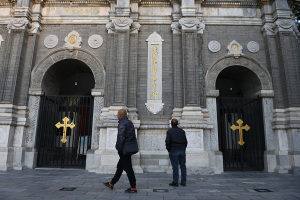Christmas 2017: Who is St. Nicholas?
While it is already a known fact that St. Nicholas inspired the creation of Santa Claus, there are many stories on who he really was.
Christians and non-Christians alike recognize that St. Nicholas came from Turkey, where he was a bishop known for his generosity and compassion towards the poor. However, this is not the only story attached to the so-called Father Christmas as there are different other versions said about him in other countries.
In France, for instance, a story goes that there were three children abducted by an evil butcher, who lured them into his shop. There, the evil butcher killed the three children and used their meat as food for travelers at an inn. However, Nicholas warned those who were about to eat the meat of the children and brought them back to life after calling their names. This gave rise to his reputation as the protector of the children.
Some, on the other hand, speculate that St. Nicholas is based on the Norse God, Thor, who supposedly rode a chariot pulled by two goats named Cracker and Gnasher. However, some believe that St. Nicholas is more of Odin, Thor's father.
While there are some who believe that St. Nicholas, just like Santa Clause, is a figment of the imagination, it was reported this week that researchers have confirmed that the pelvic bone believed to be that of the real St. Nicholas from Turkey that was discovered earlier this year can possibly be that of the Christmas icon. The relic is believed to be a part of the bones of the saint that have been kept in the Basilica di San Nicola in Bari since the 11th century.
While the carbon dating procedure on the relic has confirmed that the bone dates back to the 4th century AD, the era believed to be when St. Nicholas lived and died, the researchers need to subject it to DNA testing in order to confirm whether it is really part of those being kept in Italy.
"It's the first step. If we get a date in tandem with the historical date, that tells us that we haven't been able to disprove that it could have been from that individual," Dr. Georges Kazan, one of the researchers who carried out the carbon dating procedure on the relic at the Oxford Relics Cluster at Keble College's Advanced Studies Centre, opined.




























